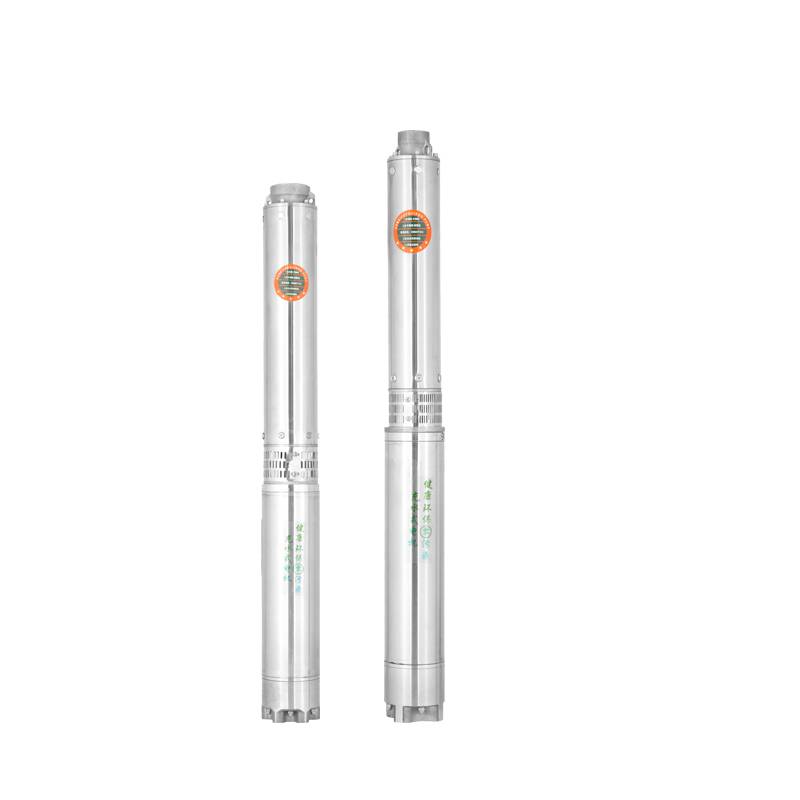Aug . 06, 2024 07:01 Back to list
Guidelines for Safely Removing Deep Well Submersible Pumps in Water Well Operations
Deep Well Submersible Pump Removal A Comprehensive Guide
Deep well submersible pumps are essential for extracting water from deep underground sources. These pumps are often employed in agricultural, municipal, and industrial applications due to their efficiency and ability to work under high pressure. However, there may come a time when a removal is necessary, whether for maintenance, repair, or replacement. This article aims to provide a comprehensive guide on the removal of deep well submersible pumps.
Understanding the Components
Before delving into the removal process, it's crucial to understand the various components involved in a submersible pump system. These typically include the pump itself, a motor, a drop pipe, and the electrical wiring. The pump sits deep underwater in a well casing, often submerged at depths that can exceed hundreds of feet. The removal process must be approached with caution to avoid damaging these components.
Safety First
Safety should always be the first consideration. Before beginning the removal process, ensure that you have the necessary safety equipment, which may include
- Protective eyewear - Gloves - Hard hats - Steel-toed boots
Additionally, it is essential to turn off the electrical power to the pump to prevent accidental electrocution during the removal process. Always verify that the power is switched off before proceeding.
Tools and Equipment Needed
The following tools and equipment will typically be required for a successful removal
- Wrenches - Pliers - Rope or cable - A hoist or winch - A flatbed truck or trailer for transportation
Having the right tools on hand will greatly facilitate the removal and reduce the risk of damages
.deep well submersible pump removal

Step-by-Step Removal Process
1. Prepare the Site Clear the area surrounding the wellhead, ensuring there is sufficient space for the workspace and tools. Remove any obstacles that may hinder the removal process.
2. Disconnect Electrical Supply Before touching any components, ensure the power supply is completely disconnected. This may involve turning off breakers or removing fuses.
3. Remove the Well Cap The well cap is often secured with bolts or screws. Carefully remove it to expose the well casing and pump assembly.
4. Disconnect the Pump from the Drop Pipe Locate the connection between the pump and the drop pipe. Use appropriate tools to unscrew or unfasten the connection. Be cautious, as there may be stagnant water or debris in the drop pipe.
5. Attach a Hoist or Winch Securely attach a hoist or winch to the pump. Ensure that the lifting mechanism is rated for the pump's weight.
6. Begin Lifting the Pump Slowly and evenly lift the pump from the well, being mindful of any resistance. If the pump feels stuck, do not force it; instead, reassess your connections to ensure all fasteners have been removed.
7. Inspect the Pump and Components Once the pump is out of the well, conduct a thorough inspection for any signs of wear or damage. This is a critical step if you plan to replace or repair the unit.
8. Store or Transport the Pump Once the removal and inspection process is complete, either store the pump securely or transport it to a designated location for repair or replacement.
Conclusion
Removing a deep well submersible pump is a task that requires careful planning and execution. By following the steps outlined in this guide and prioritizing safety, you can successfully remove a submersible pump while minimizing the risk of damage to your well system. Whether you're performing routine maintenance or addressing a malfunction, understanding the removal process is crucial for any well owner or technician. Remember, when in doubt, consult a professional to ensure that the job is done correctly and safely.
-
Submersible Water Pump: The Efficient 'Power Pioneer' of the Underwater World
NewsJul.01,2025
-
Submersible Pond Pump: The Hidden Guardian of Water Landscape Ecology
NewsJul.01,2025
-
Stainless Well Pump: A Reliable and Durable Pumping Main Force
NewsJul.01,2025
-
Stainless Steel Submersible Pump: An Efficient and Versatile Tool for Underwater Operations
NewsJul.01,2025
-
Deep Well Submersible Pump: An Efficient 'Sucker' of Groundwater Sources
NewsJul.01,2025
-
Deep Water Well Pump: An Efficient 'Sucker' of Groundwater Sources
NewsJul.01,2025
-
 Submersible Water Pump: The Efficient 'Power Pioneer' of the Underwater WorldIn the field of hydraulic equipment, the Submersible Water Pump has become the core equipment for underwater operations and water resource transportation due to its unique design and excellent performance.Detail
Submersible Water Pump: The Efficient 'Power Pioneer' of the Underwater WorldIn the field of hydraulic equipment, the Submersible Water Pump has become the core equipment for underwater operations and water resource transportation due to its unique design and excellent performance.Detail -
 Submersible Pond Pump: The Hidden Guardian of Water Landscape EcologyIn courtyard landscapes, ecological ponds, and even small-scale water conservancy projects, there is a silent yet indispensable equipment - the Submersible Pond Pump.Detail
Submersible Pond Pump: The Hidden Guardian of Water Landscape EcologyIn courtyard landscapes, ecological ponds, and even small-scale water conservancy projects, there is a silent yet indispensable equipment - the Submersible Pond Pump.Detail -
 Stainless Well Pump: A Reliable and Durable Pumping Main ForceIn the field of water resource transportation, Stainless Well Pump has become the core equipment for various pumping scenarios with its excellent performance and reliable quality.Detail
Stainless Well Pump: A Reliable and Durable Pumping Main ForceIn the field of water resource transportation, Stainless Well Pump has become the core equipment for various pumping scenarios with its excellent performance and reliable quality.Detail
